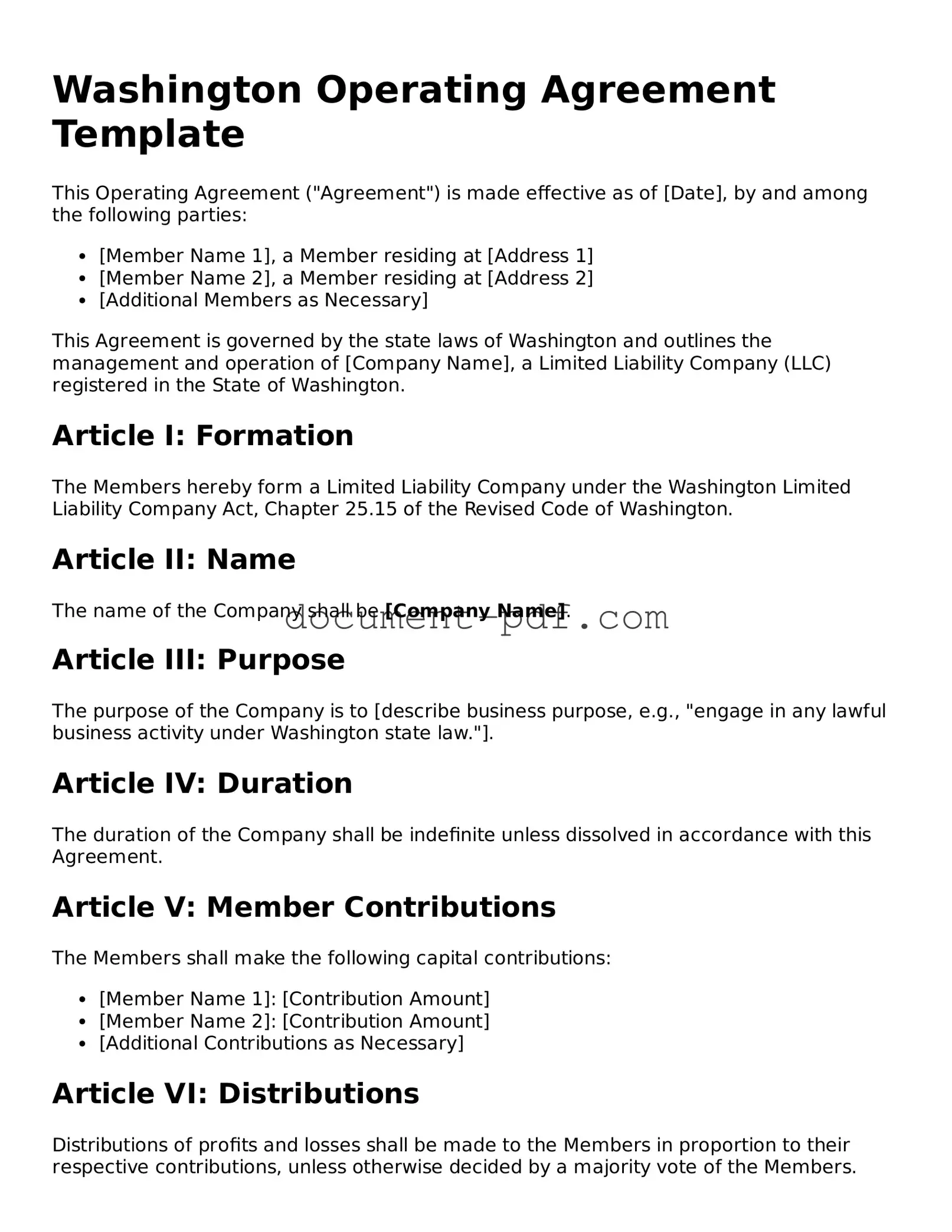Washington Operating Agreement Template
This Operating Agreement ("Agreement") is made effective as of [Date], by and among the following parties:
- [Member Name 1], a Member residing at [Address 1]
- [Member Name 2], a Member residing at [Address 2]
- [Additional Members as Necessary]
This Agreement is governed by the state laws of Washington and outlines the management and operation of [Company Name], a Limited Liability Company (LLC) registered in the State of Washington.
Article I: Formation
The Members hereby form a Limited Liability Company under the Washington Limited Liability Company Act, Chapter 25.15 of the Revised Code of Washington.
Article II: Name
The name of the Company shall be [Company Name].
Article III: Purpose
The purpose of the Company is to [describe business purpose, e.g., "engage in any lawful business activity under Washington state law."].
Article IV: Duration
The duration of the Company shall be indefinite unless dissolved in accordance with this Agreement.
Article V: Member Contributions
The Members shall make the following capital contributions:
- [Member Name 1]: [Contribution Amount]
- [Member Name 2]: [Contribution Amount]
- [Additional Contributions as Necessary]
Article VI: Distributions
Distributions of profits and losses shall be made to the Members in proportion to their respective contributions, unless otherwise decided by a majority vote of the Members.
Article VII: Management
The management of the Company shall be vested in the Members. Each Member shall have equal rights in the management and control of the Company.
Article VIII: Indemnification
The Company shall indemnify each Member against any losses, expenses, or liabilities incurred in connection with the Company's business, to the fullest extent permitted by law.
Article IX: Amendment
This Agreement may be amended only by a written agreement signed by all Members.
Article X: Governing Law
This Agreement shall be governed by and construed in accordance with the laws of the State of Washington.
IN WITNESS WHEREOF
The parties hereto have executed this Operating Agreement as of the day and year first above written.
__________________________
[Member Name 1], Member
__________________________
[Member Name 2], Member
__________________________
[Additional Members as Necessary]
